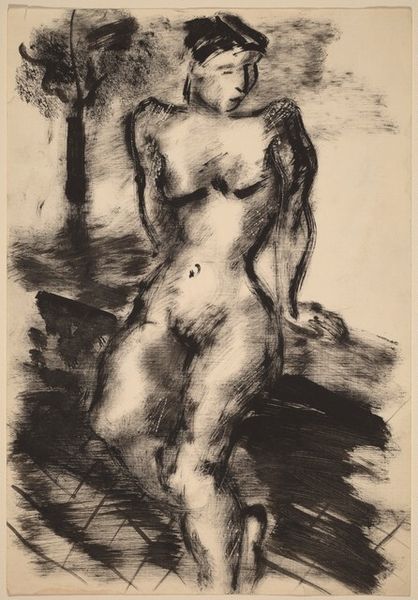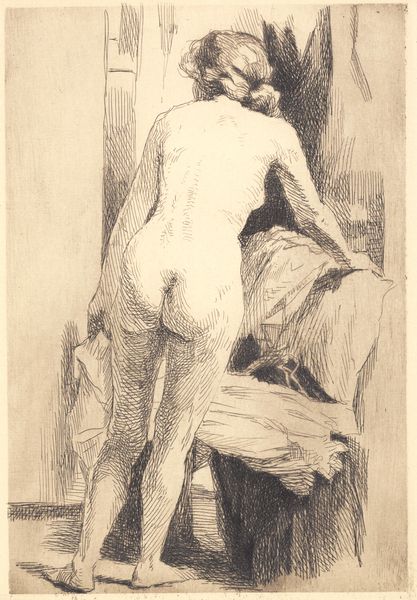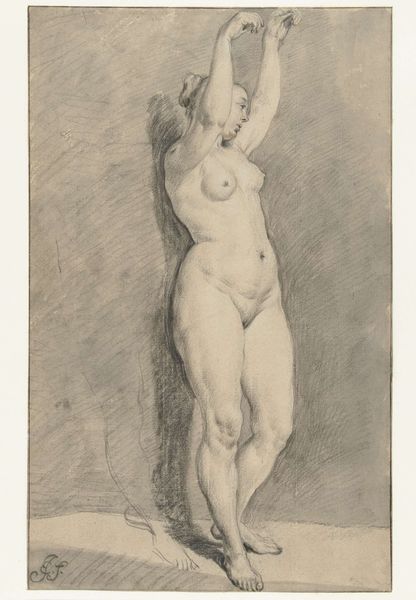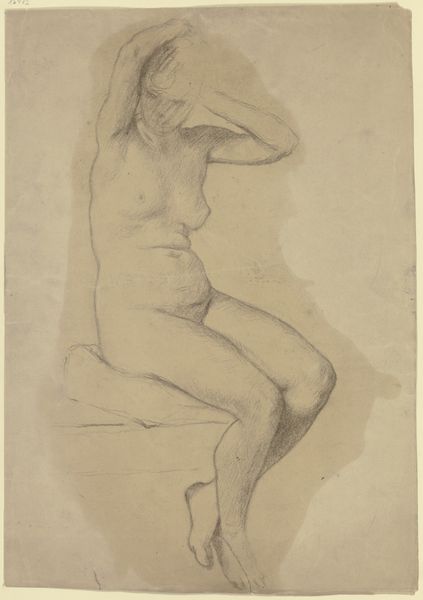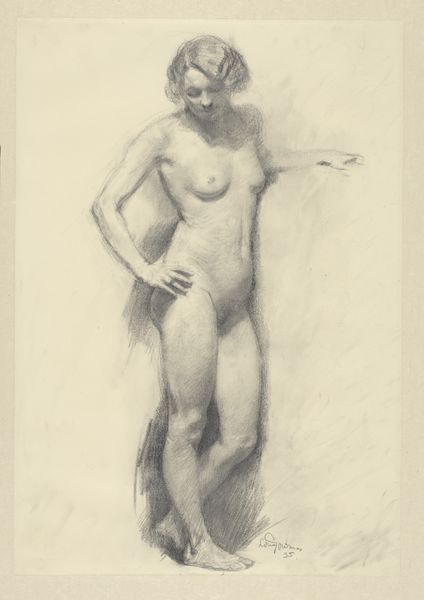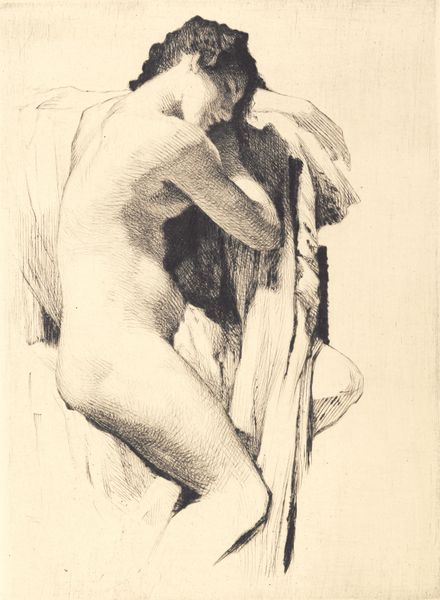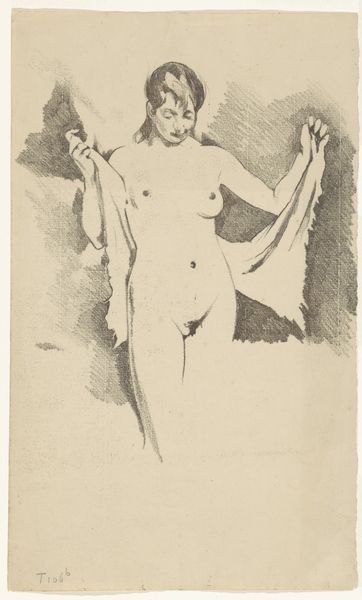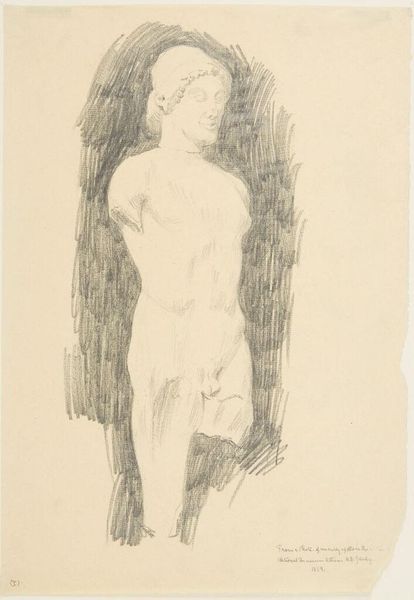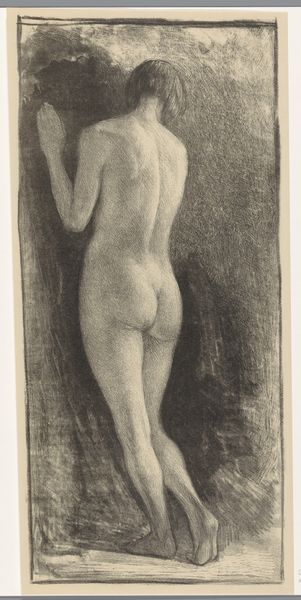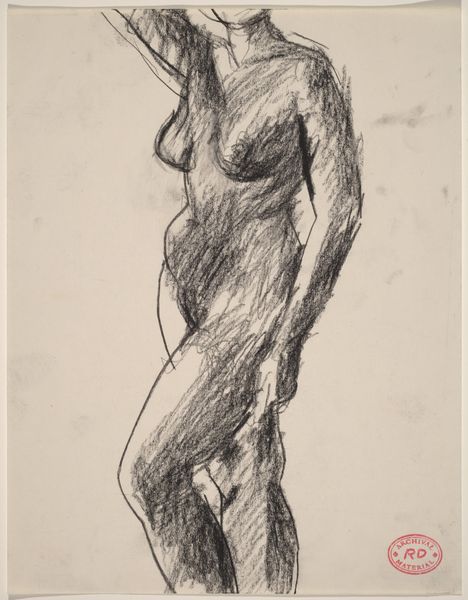
etching
#
impressionism
#
etching
#
landscape
#
figuration
#
intimism
#
symbolism
#
nude
#
realism
Copyright: Public domain
Curator: Upon entering this gallery, visitors are immediately struck by Paul-Albert Besnard's etching from 1886, titled "Eve". Editor: My first impression is of quiet contemplation. The figure, rendered in delicate lines, seems almost to dissolve into the surrounding landscape. There is also the notion of this secluded safe haven from a patriarchal world for the lone female. Curator: Indeed. The symbolism here is multilayered. Eve is often depicted in moments of shame and realization, but here, the visual elements surrounding her suggest an intimacy with nature. Perhaps Besnard reframes her not as the bringer of sin, but as a figure deeply connected to the natural world. How do you perceive the artist’s choice of using a monochromatic palette to explore the human form? Editor: It is interesting to consider what is at stake. Black and white offers so many interpretive paths. By focusing on shadow and light, Besnard highlights a universality—stripping away skin color and focusing instead on the archetype. Curator: And, perhaps, underscoring a form of rebellion against academic conventions of the time? "Eve," especially depicted with such delicate lines in a genre historically associated with grand narratives and oil paints, invites us to think about the evolving role of women in art, and their portrayal not merely as objects, but as subjects possessing their own complex agency. It subtly undermines patriarchal views of the female form. Editor: Exactly. She seems to inhabit a world where visual symbols invite the viewer to delve into a reflective psychological experience and connection with nature that has been systemically denied. What does the snake represent? Is the forbidden fruit displayed in other ways, suggesting her inner world rather than tangible wrongdoing? There is indeed more than meets the eye! Curator: In many ways, Besnard created not just an artwork, but a pivotal chapter in understanding gender, identity, and the broader sociopolitical climate of the 19th century. Editor: I appreciate the image and its power to engage, particularly Besnard’s symbolic rendition. It moves away from literal depictions to invite the observer into deeper meanings that persist with each viewing.
Comments
No comments
Be the first to comment and join the conversation on the ultimate creative platform.

